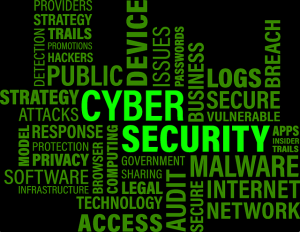ALPR Cameras vs. License Plate Capture Cameras – What’s the Difference?

ALPR cameras (Automatic License Plate Recognition cameras) use the most advanced digital imaging technology available. They combine that with filtering and OCR (Optical Character Recognition) software. This generates a digital record of the license plate number and origin which can be automatically entered into a search program. With this capability, we have the tool to search any database. Adaptive Recognition’s Carmen, Vidar, Einar, and MicroCAM ALPR systems are great examples of this technology. License plate capture cameras use a small part of this same technology.
However, in most cases, they simply provide a legible image of the license plate and eliminate everything else in the view. So a person can read the license plate but a computer can’t. Another limitation is that the primitive software might focus on another lettering on the vehicle instead of the license plate. We’ll dig further into these differences and how they affect various applications in this article.
Detailed Capabilities of the Two Systems
Here we’ll outline each system’s capabilities and limitations. Further along we’ll look at how these capabilities and limitations apply to various uses.
License Plate Capture Cameras
These cameras can:
- Photograph a vehicle and search the image for what it interprets as a license plate.
- Eliminate the entire image except for what they see as a license plate.
- Produce an image of the license plate that a person can read. That information can be entered into the desired record.
- Be inexpensive compared to sophisticated ALPR cameras.
In most cases, they can’t:
- Tell the difference between a license plate and another lettering on the vehicle.
- Make a digitally readable record of the license plate number or other information.
- Retain the entire image of the vehicle.
- Capture a license plate image on a fast-moving vehicle.
- Operate reliably in the presence of glare or under bad visibility conditions.
ALPR Cameras
Adaptive Recognition’s specialized ALPR cameras are able to:
- Make a digitally readable record of the plate so a computer can positively identify it and automatically cross-check it against databases to:
- Identify stolen vehicles.
- Identify vehicles involved in other crimes.
- Determine whether the vehicle’s driver has paid a toll, fee, or other obligation, or
- Automatically deduct such a fee from a pre-registered bank or credit account, or invoice a designated party.
- Retain the entire image of the vehicle.
- Employ add-on software to identify:
- The vehicle’s speed.
- The vehicle’s make and model.
- The vehicle’s color.
- The vehicle’s contents (such as hazardous materials)
- High-emission vehicles.
- Produce reliable information in extreme reduced-visibility situations.
- Produce reliable information at vehicle speeds up to 300 km/hr. (186 MPH).
How the Systems’ Capabilities and Limitations Apply to Various Uses
In low-volume traffic situations, such as rural roads or a little-used highway exit, a license plate capture camera may be adequate. It’s likely that the authorities responsible in those situations would look for cost-effective tools to acquire any needed license plate data. The human labor to record and interpret the plate image would not be excessive.
Toll Collection
A human toll collector or a transponder located in regular users’ cars might be adequate for toll collection in low-volume areas. The license plate images would be useful for eliminating the need for a full-time toll collector. Billings could be manually generated from the off-hours images.
In higher volume situations such as thruways, eliminating toll booths and plazas has improved the appearance, safety, and flow of traffic. ALPR cameras have facilitated this highway improvement. Since these cameras can read license plates on vehicles traveling at highway speeds and automatically charge the toll to the vehicle’s owner, ALPR eliminates the need for the manual or low-speed collection of tolls.
Depending on what special capabilities are built into the ALPR cameras, they may be able to identify speeders, erratic drivers, hazardous material carriers, or high-emission vehicles.
Parking Lot Entry/Exit
Here again, in a low-volume situation, a manual attendant or manual recorder of images from a license plate capture camera might well suffice.
At busy airports or other transportation terminals, municipal parking lots, etc., the cost and risk of errors for manual labor to record and enter license plate information would be prohibitive. Elimination of errors alone could justify the use of an ALPR camera linked to an automatic billing and payment system.
Police Surveillance
Patrol cars need the efficiency of onboard ALPR. They benefit greatly from the onboard capability to digitally read license plates of moving vehicles and identify the owners. If a stop is required, ALPR can warn them ahead of time if the driver is a potential threat.
Other Applications
When traffic volume is high, ALPR technology assists authorities in maintaining safety and orderly traffic flow. Here are some situations where ALPR capability is justified. License plate capture technology would either provide inadequate information or be impossibly cumbersome to employ.
- Vehicle access control in high-security locations – immediate and complete identification of vehicles is important, along with other security measures enabled by ALPR.
- Red-light enforcement – drivers running red lights are a dangerous hazard that must be eliminated.
- Data collection in Smart Cities – these are, by definition, high-volume situations.
- Speed enforcement – identifying and apprehending speeders requires quick action.
In summary, we see that these two systems vary enormously in the capabilities they provide. Both have their uses in various situations. The main advantage of license plate capture cameras is their low cost. ALPR technology is called for when traffic volume is high and a fast reaction to dangerous situations is required.
Adaptive Recognition produces many types of ALPR cameras with capabilities useful in various situations. Get in touch with them for a solution for your traffic monitoring needs.






